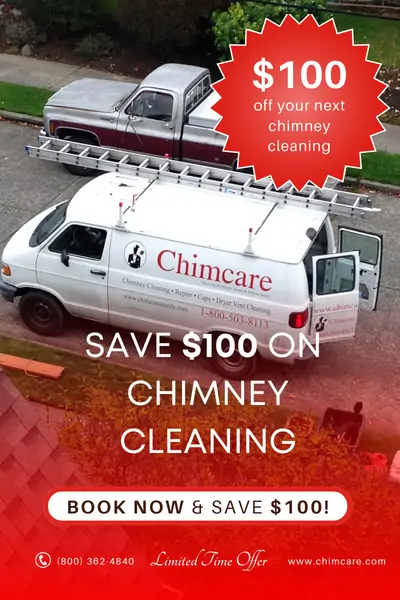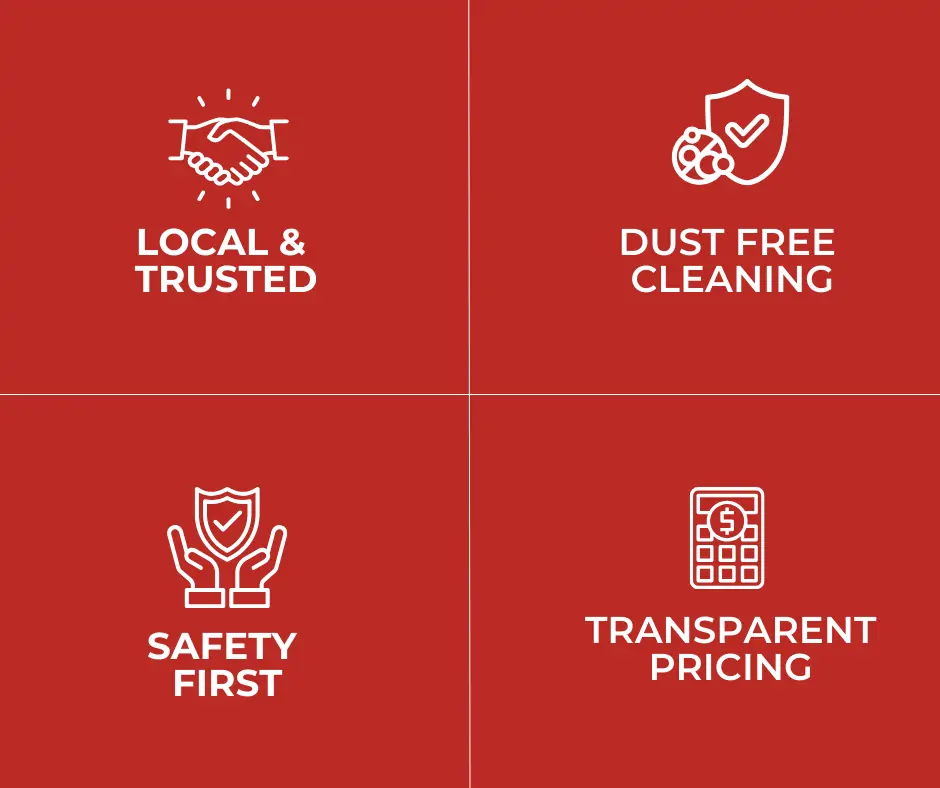Wood is never burned completely. The smoke contains some unburned gases and a vapor-like fog of unburned liquids that are like tar. These condense along the sides of the stove pipes or chimney and become a flammable, crusty build-up called creosote.
Creosote presents at least three major problems to the wood burner: 1) Creosote is corrosive to many surfaces, including steel and mortar which are common chimney materials. 2) Creosote build-up acts as an insulating material and reduces the efficiency of your wood stove or fireplace. Finally and most critical, 3) creosote is highly flammable and presents a potential fire hazard.
- Type of wood burned
- Amount of moisture in the wood
- Type of fire burned
- Efficiency of stove
- Location of flue
- Type of stove or fireplace
- Amount of use
Carefully open the damper and, using a flashlight, look up the flue for signs of a build-up along the walls. Goggles are suggested for this. If the build-up is ¼-inch or more, a cleaning is needed. If you notice back-drafting or smoking or losing heat, you should check for creosote build-up immediately.
You should clean your chimney regularly to remove creosote from the lining of the flue. Creosote is a highly flammable residue that builds up over time from combustion in your chimney. Chimneys should be cleaned when any noticeable creosote buildup occurs. Creosote is black or brown in appearance and it can be crusty and flaky, tar-like, drippy and sticky, or shiny and hardened. The Chimney Safety Institute of America claims that as little as ¼-inch of buildup is enough to cause a chimney fire capable of damaging the chimney or spreading to the home. Cleaning your chimney also reduces the risk of carbon monoxide poisoning in your home.
Yes! In 2007, there were 48,800 heating-related home fires, resulting in 301 deaths, 1,383 injuries, and $606.5 million in property damage (NFPA).
It is recommended that your chimney be cleaned frequently. The National Fire Protection Association recommends cleaning and inspection of chimneys at least once a year, but more if you use your fireplace regularly. This applies to both wood-burning and gas fireplaces. Even if you do not use your fireplace, your chimney should still be cleaned and inspected since animals may build nests in the flue.
A chimney or firebox left un-repaired can:
- Release dangerous, toxic, and unhealthy gases into your home.
- Allow flames and sparks to escape and come in contact with potentially combustible materials in your home (a real fire hazard).
- Allow loose masonry materials to fall and potentially cause damage to your property or people.
- The longer repairs are put off the worse damage will get, costs can increase dramatically if left unfixed.
1) We know and understand fireplaces and chimneys and how to clean them. 2) We literally scrub your fireplace from floor to roof using tools specifically designed for that purpose. 3) We are professionally trained and fully licensed and insured (this is important). 4) We guarantee a mess-proof job. And, finally, 5) we are a local business. Our roots are here in the community and we take pride in this. If your chimney needs cleaning, then we act like a good neighbor and tell you so. If we think your installation is unsafe, we think you’ll want to know that, too!
We really don’t know. According to folklore, they do. We can, however, prevent bad luck… the bad luck and misfortune of a chimney fire!





